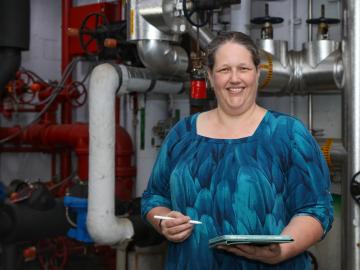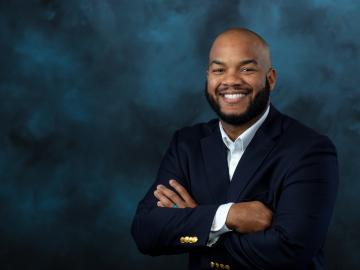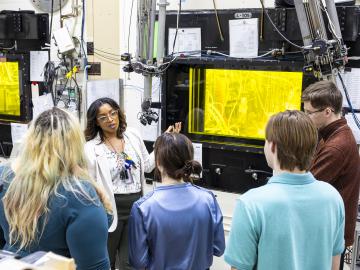
Filter News
Area of Research
- Advanced Manufacturing (5)
- Biological Systems (1)
- Biology and Environment (27)
- Computational Biology (2)
- Computer Science (2)
- Electricity and Smart Grid (2)
- Energy Science (50)
- Fusion and Fission (2)
- Fusion Energy (2)
- Isotopes (20)
- Materials (55)
- Materials for Computing (13)
- National Security (14)
- Neutron Science (20)
- Nuclear Science and Technology (4)
- Quantum information Science (2)
- Sensors and Controls (1)
- Supercomputing (27)
- Transportation Systems (1)
News Type
News Topics
- (-) Biomedical (53)
- (-) Biotechnology (28)
- (-) Grid (54)
- (-) Isotopes (38)
- (-) Materials Science (89)
- (-) Nanotechnology (29)
- (-) Security (17)
- 3-D Printing/Advanced Manufacturing (89)
- Advanced Reactors (25)
- Artificial Intelligence (92)
- Big Data (62)
- Bioenergy (84)
- Biology (100)
- Buildings (50)
- Chemical Sciences (48)
- Clean Water (30)
- Composites (21)
- Computer Science (153)
- Coronavirus (30)
- Critical Materials (17)
- Cybersecurity (17)
- Education (2)
- Emergency (4)
- Energy Storage (64)
- Environment (164)
- Exascale Computing (52)
- Fossil Energy (7)
- Frontier (45)
- Fusion (47)
- High-Performance Computing (93)
- Hydropower (12)
- Irradiation (2)
- ITER (7)
- Machine Learning (51)
- Materials (87)
- Mathematics (11)
- Mercury (10)
- Microelectronics (3)
- Microscopy (34)
- Molten Salt (7)
- National Security (63)
- Neutron Science (109)
- Nuclear Energy (85)
- Partnerships (37)
- Physics (38)
- Polymers (18)
- Quantum Computing (39)
- Quantum Science (59)
- Simulation (51)
- Software (1)
- Space Exploration (23)
- Statistics (3)
- Summit (48)
- Transportation (66)
Media Contacts

Advanced materials research to enable energy-efficient, cost-competitive and environmentally friendly technologies for the United States and Japan is the goal of a memorandum of understanding, or MOU, between the Department of Energy’s Oak Ridge National Laboratory and Japan’s National Institute of Materials Science.

In May, the Department of Energy’s Oak Ridge and Brookhaven national laboratories co-hosted the 15th annual International Particle Accelerator Conference, or IPAC, at the Music City Center in Nashville, Tennessee.

Sara Martinez ensures the safety and longevity of aging structures at Oak Ridge National Laboratory, employing her engineering expertise to protect against natural disasters and extend the lifespan of critical facilities.

Researchers at ORNL and the University of Maine have designed and 3D-printed a single-piece, recyclable natural-material floor panel tested to be strong enough to replace construction materials like steel.

Early career scientist Frankie White's was part of two major isotope projects at the same time he was preparing to be a father. As co-lead on a team that achieved the first synthesis and characterization of a radium compound using single crystal X-ray diffraction and part of a team that characterized the properties of promethium, White reflects on the life-changing timeline at work, and at home.

John Lagergren, a staff scientist in Oak Ridge National Laboratory’s Plant Systems Biology group, is using his expertise in applied math and machine learning to develop neural networks to quickly analyze the vast amounts of data on plant traits amassed at ORNL’s Advanced Plant Phenotyping Laboratory.

ORNL scientists develop a sample holder that tumbles powdered photochemical materials within a neutron beamline — exposing more of the material to light for increased photo-activation and better photochemistry data capture.

ORNL researchers used electron-beam additive manufacturing to 3D-print the first complex, defect-free tungsten parts with complex geometries.

Researchers set a new benchmark for future experiments making materials in space rather than for space. They discovered that many kinds of glass have similar atomic structure and arrangements and can successfully be made in space. Scientists from nine institutions in government, academia and industry participated in this 5-year study.

Students from the first class of ORNL and Pellissippi State Community College's joint Chemical Radiation Technology Pathway toured isotope facilities at ORNL.


